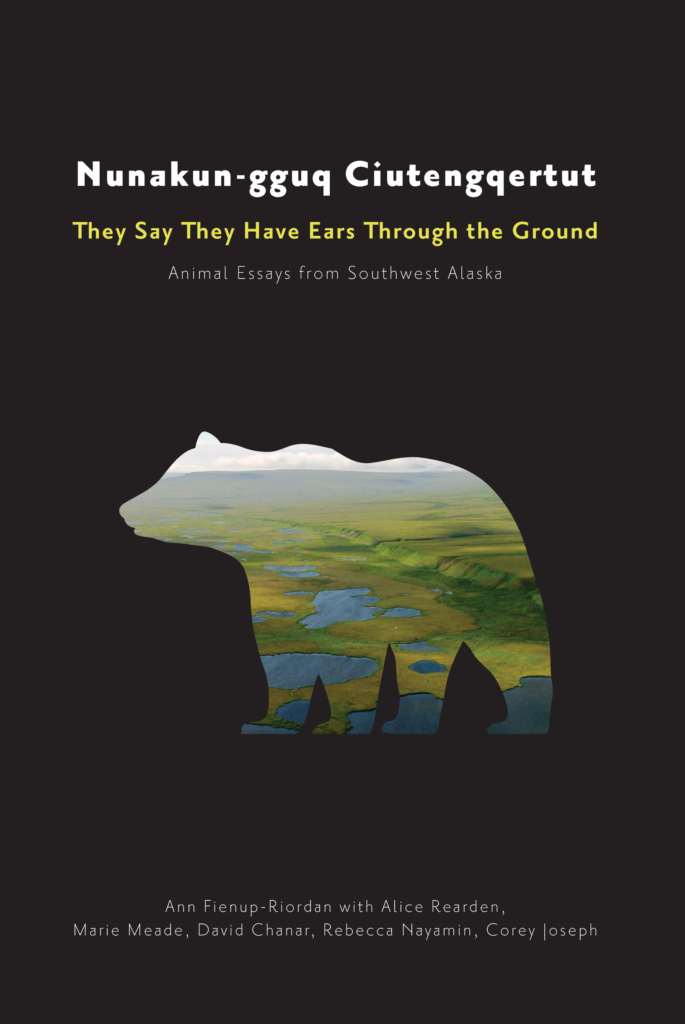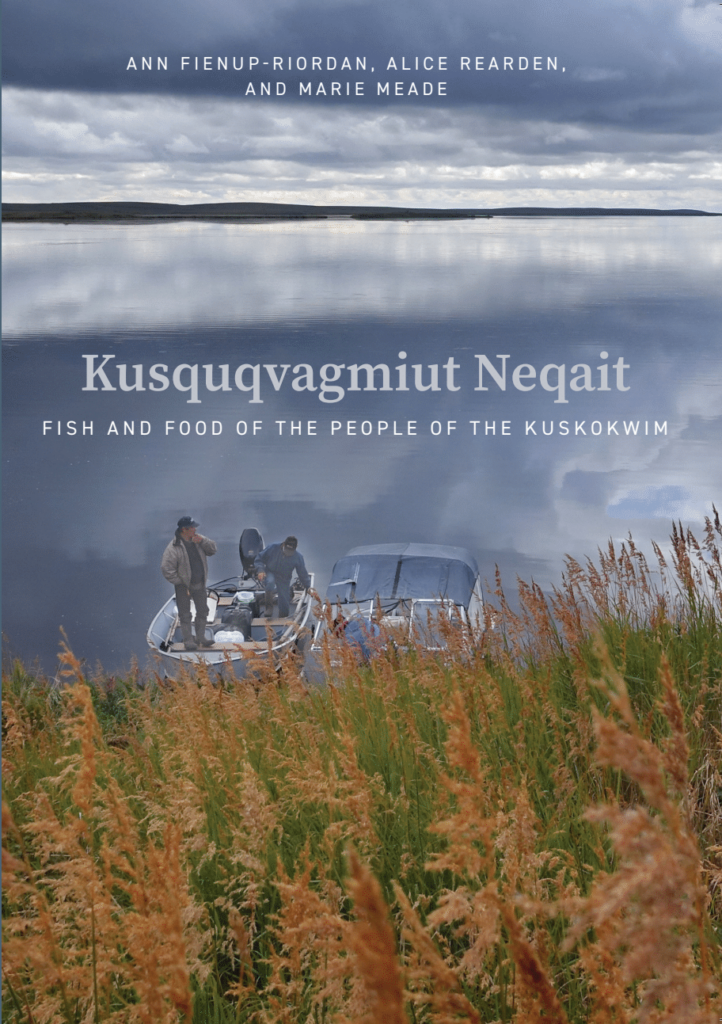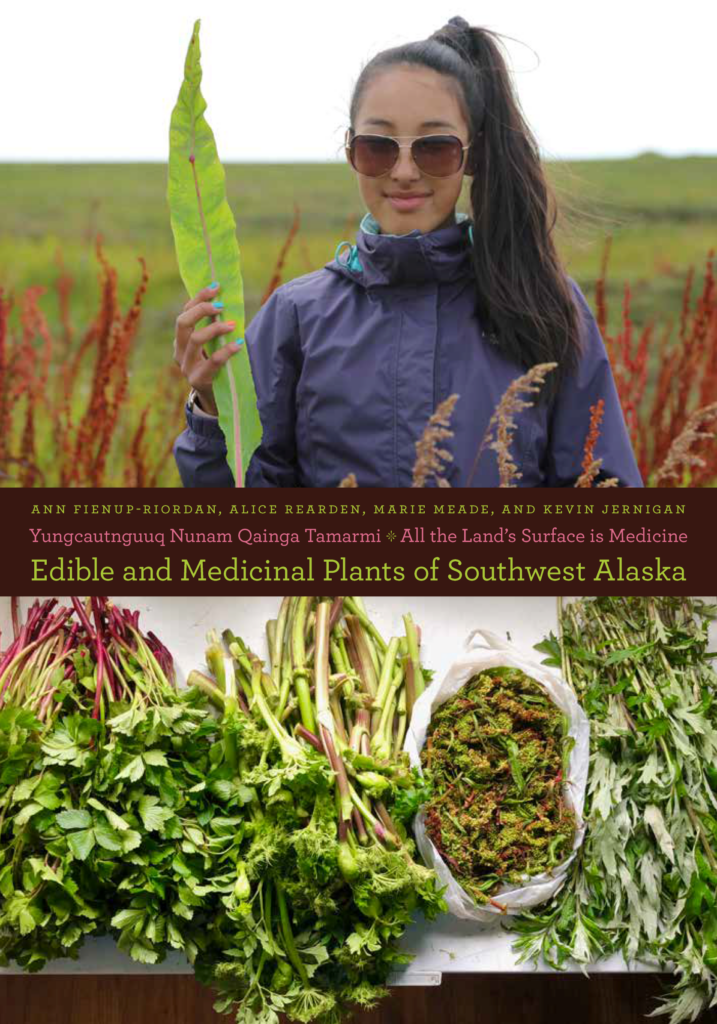Trove of Traditional Knowledge
CECI Publishes New Books on the Relationship between Yup’ik People and the Natural World
Storyknife, January/February 2021 edition
A trio of new books from Calista Corporation’s educational non-profit provides a new, closer look at the relationship between Yup’ik people and the natural world of the Yukon-Kuskokwim Delta.
For over 20 years, the Calista Education and Culture, Inc. (CECI) research team has interviewed Elders about their traditional knowledge and published books based on those interviews.
By sharing this information, (our Elders) felt that the western world will be able to understand who we are and what we do and as a result, be able to respect who we are.
Mark John, Cultural Advisor, Calista Education and Culture, Inc.

Available Now! 
Available Now! 
Coming Soon!
This new set of books focus on animal and plant knowledge from Elders across the delta, and the fish knowledge from Elders in three Kuskokwim River villages: Napaskiak, Napakiak and Oscarville.
When asked who should be able to see this work, the Calista Elders Council board of directors said the traditional teachings should be open to everybody, including today’s youth, who learn by reading, and the rest of the world as well.
“By sharing this information, they felt that the western world will be able to understand who we are and what we do and as a result, be able to respect who we are,” says CECI Cultural Advisor Mark John, who leads the research team.
The CECI research team is prolific, producing one or two books nearly every year since 2003. The research and writing are largely funded by scientific organizations such as the National Science Foundation and other supporters.
Due to the pandemic, the CECI research team was unable to hold its regular meetings with Elders last year. Instead, the team used the time to finish these three books, says CECI anthropologist Ann Fienup-Riordan.
For book details, keep reading or visit:

Nunakun-gguq Ciutengqertut/They Say They Have Ears Through the Ground: Animal Essays from Southwest Alaska
By Ann Fienup-Riordan with Alice Rearden, Marie Meade, David Chanar, Rebecca Nayamin, and Corey Joseph (University of Alaska Press)
These essays focus on some of the most important species (including moose, bears, seals, salmon, and birds) and how relations with these species have both changed and remained the same over the past two decades. In a place where hunting and fishing are still part of day-to-day life, these views of animals remain very much in action. Hunters are advised that if they are over-confident and brag, they will not catch; animals will hear them and they will get nothing. Conversely, what one gives away will be replaced. And if you are compassionate, others will wish for your future success.
This book was supported by a National Science Foundation grant.

Kusquqvagmiut Neqait/Fish and Food of the People of the Kuskokwim
By Ann Fienup-Riordan, Alice Rearden, and Marie Meade (Alaska Native Language Center)
Based on conversations with Yup’ik men and women living in the Kuskokwim River communities of Napaskiak, Napakiak, and Oscarville, this bilingual book details traditional knowledge surrounding the harvest and use of the six species of whitefish, as well as salmon, pike, burbot, and blackfish, on which people relied so heavily in the past and continue to harvest to this day. For Kuskokwim residents, successful harvesting of fish requires practical skills, including knowledge of fish migrations, when and where to set nets, and how deep to set them. Men and women must also act appropriately, both in the village and in the wilderness, to ensure a successful harvest.
This book was supported by the U.S. Fish & Wildlife Service and Rasmuson Foundation.

Yungcautnguuq Nunam Qainga Tamarmi/All the Land’s Surface is Medicine: Edible and Medicinal Plants of Southwest Alaska
By Ann Fienup-Riordan, Alice Rearden, Marie Meade, Kevin Jernigan, and Jacqueline Cleveland (University of Alaska Press)
Close to 100 men and women from all over southwest Alaska shared knowledge of their homeland and the plants that grow there. They speak eloquently about time spent gathering and storing plants and plant material during snow-free months, including gathering greens during spring, picking berries each summer, harvesting tubers from the caches of tundra voles, and gathering a variety of medicinal plants. The book is intended as a guide to the identification and use of edible and medicinal plants in southwest Alaska, but also as an enduring record of what Yup’ik men and women know and value about plants and the roles plants continue to play in Yup’ik lives.
This book was supported by the National Science Foundation.